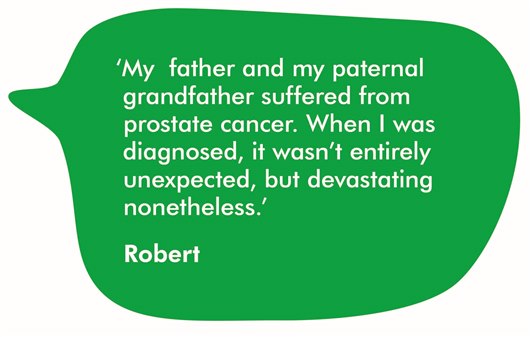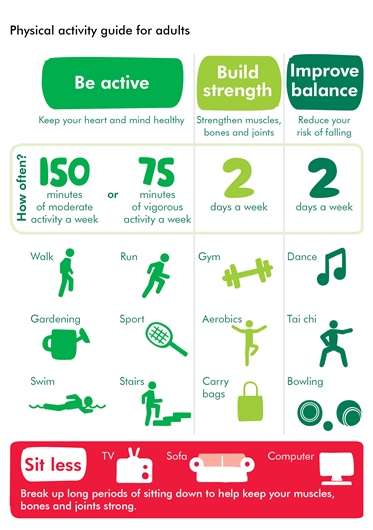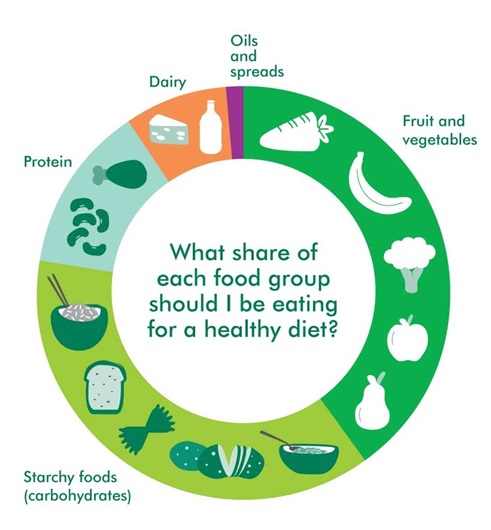It’s November again - a time each year when men are encouraged to focus on their health and well-being. The aim of the month is to raise awareness of men’s health issues – namely prostate and testicular cancers, mental health and suicide prevention.
Ultimately the aim is to save lives. In this blog, expert information development nurse Richard talks more about men’s health, and some of the male cancers.
The Movember movement
Each year, men are encouraged to get involved and start talking about their health, by growing a moustache – a “mo”. The Movember Foundation began in Australia back in 2003. It’s now pretty much worldwide and has involved over 5 million men (and women), raising over £440 million to help stop men dying too young. On average, men die six years earlier than women.
As well as raising awareness, the Movember Foundation is changing the way men’s health is researched and the way health services reach and support men.
Cancer awareness
It’s good to be aware of all cancers and to know the main symptoms that you should see your GP about. But as it’s Men’s Health Month, we are going to concentrate on the two main “male” cancers – testicular and prostate.
Testicular cancer
Fortunately, this isn’t one of the most common cancers. It is also one of the most treatable. Approximately 2400 men are diagnosed each year in the UK. And about 98% are successfully treated. But some men are dying from testicular cancer, and others leave symptoms for so long that they have to have extensive treatment.
Testicular cancer mostly affects boys and men under 35, but it can affect men at any age. Men should regularly check for symptoms – once a month, ideally. Get to know what your testicles normally feel like so you can spot any changes.
You should see your GP if you have any of these symptoms. Don’t ignore them:
Although it can feel embarrassing to go to the GP with these symptoms, your GP is used to dealing with this kind of issue. While most testicular lumps aren’t caused by cancer, it’s still important to get them checked.
Prostate cancer
Prostate cancer is the most common cancer in men – over 40, 000 men are diagnosed each year in the UK. It’s often classed as an “older” man’s disease, primarily affecting men over 50, but can affect men younger than this. It tends to be slow growing, but can grow more quickly for a small number of men.
You are more likely to get prostate cancer if you:
But any man can get prostate cancer – you don’t have to have these risk factors.

The symptoms of benign (non-cancerous) enlargement of the prostate and prostate cancer are similar.
They can include any of the following:
If you have any of these symptoms, it’s important to have them checked by your GP.
Improve your health
Getting more physically active is a great way to improve your health. It doesn’t have to be hard, you don’t have to start running marathons. But some regular activity will help to improve your health and reduce your risk of some types of cancer.
Here are some examples of exercise you could do, and what the benefits are:

Following a healthy diet will also help prevent cancer and a whole range of other illnesses.
A balanced diet looks like this:

Getting more information support
If you would like more information support, you can call our cancer information specialist between 9am and 8pm, Monday to Friday on 0808 808 00 00.
There is also lots of support available on the Online Community, especially if you are feeling down or in need of a friendly ear.
To see what else Macmillan's cancer information team has been blogging about, please visit our blog home page! You can subscribe to receive our blogs by email or RSS too.
We're with you every step of the way
The Macmillan team is here to help. Our cancer support specialists can answer your questions, offer support, or simply listen if you need a chat. Call us free on 0808 808 00 00.
Comments? Feel free to add them below (you need to be logged in).
Keep in touch Follow Macmillan’s cancer information team on Twitter @mac_cancerinfo
Whatever cancer throws your way, we’re right there with you.
We’re here to provide physical, financial and emotional support.
© Macmillan Cancer Support 2025 © Macmillan Cancer Support, registered charity in England and Wales (261017), Scotland (SC039907) and the Isle of Man (604). Also operating in Northern Ireland. A company limited by guarantee, registered in England and Wales company number 2400969. Isle of Man company number 4694F. Registered office: 3rd Floor, Bronze Building, The Forge, 105 Sumner Street, London, SE1 9HZ. VAT no: 668265007